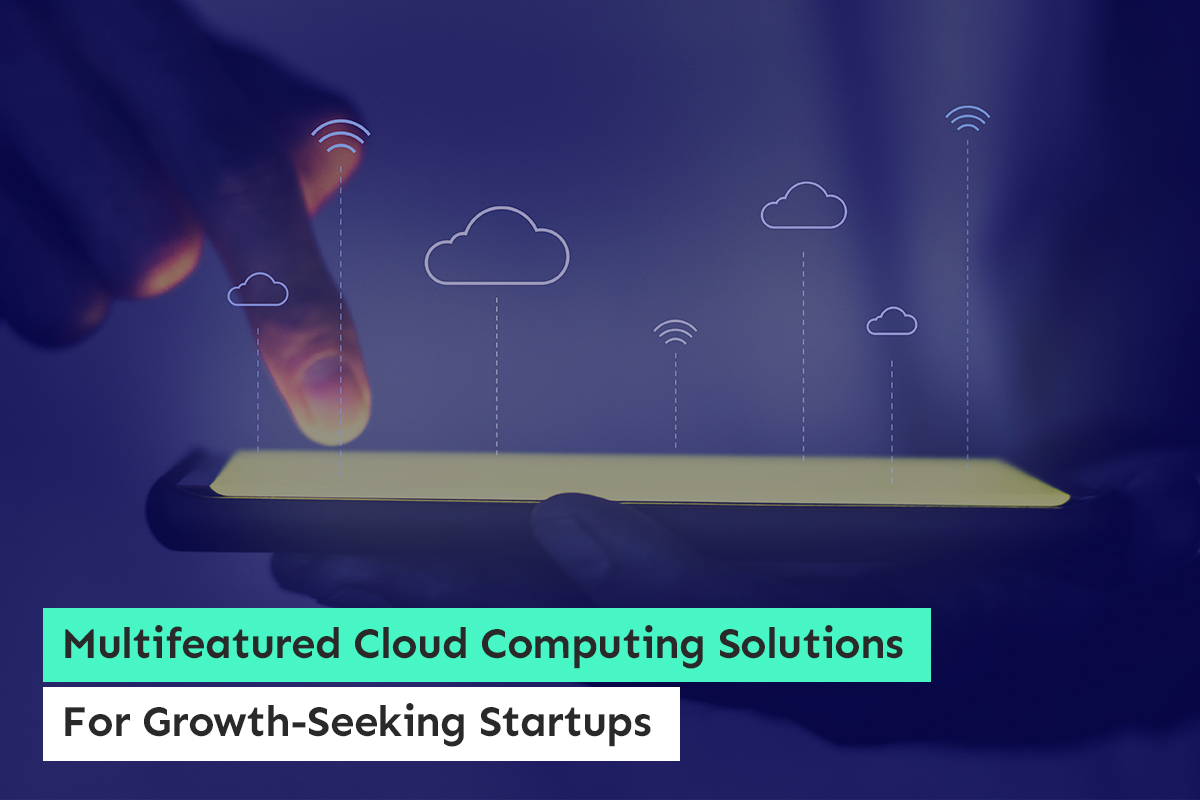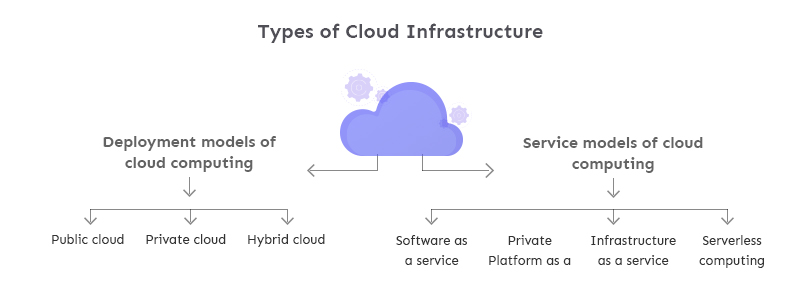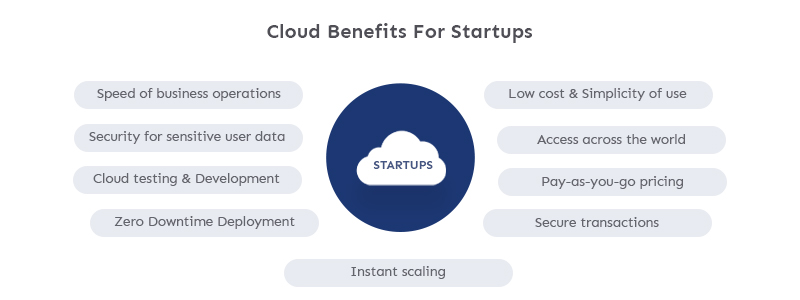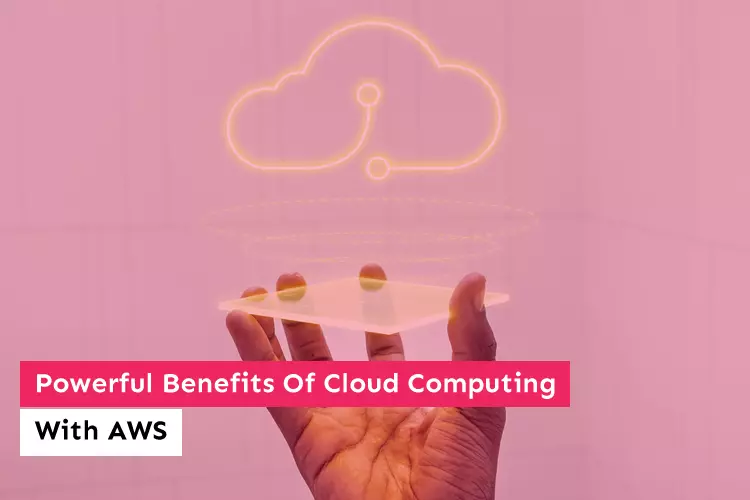Multifeatured Cloud Computing Solutions For Growth-Seeking Startups

Unlike giant tech companies, startups are based on innovative ideas. Their teams develop a product the world hasn’t seen before. Startups are new businesses, Usually led by an enthusiastic young team excited to launch their idea into the world with a clear goal in sight. But also, unlike big tech companies, they lack funding, resources, and experience.
Building a startup is hard; founders and young CEOs are constantly on the hunt to make their products the best fit for users. Along with refining the product, they need to set up all business processes from zero like marketing, logistics, infrastructure, HR, customer services, etc. All of this requires money, and as startups are bootstrapped, business expenses need to be minimum until they secure funding.
Also, Sometimes startup founders are from different cities or countries and in dire need of a system to manage team members; the cloud can be the solution for both of these problems.
Startups are new generation businesses with major operations and development running on the internet. Deploying new applications on the cloud is easy as the team doesn’t have to worry about hardware and software management.
Cloud computing is the solution to the top problems of startups – low funding, remote team management, and faster business development.
What is Cloud Computing?
Cloud computing is when a company or enterprise uses computing services like data management, storage, servers, analytics, and others from cloud providers like AWS, Azure, etc. With many eggs in one basket, cloud computing offers companies various business solutions like managing their data, performing tasks, building applications on servers provided by a third party, and more.
Cloud computing is a popular network model used by many organizations, including startups, small businesses, and big companies.
Types of cloud infrastructure
Cloud computing solutions have both deployment and service models available for startups. Let’s look at both to understand better how cloud infrastructure can help your startup and which model is most suitable for your business operations.

Deployment models of cloud computing
The three data storage models of cloud computing are public, private, and hybrid cloud.
Public cloud
Public clouds are on-demand services built for broad network access and rapid expansion. In these cloud services, IT resources like data storage, application code, and virtual machines are provided by the service providers. Startups can access all these features with their account after subscribing to the platform. Amazon web services (AWS), Microsoft Azure, IBM Cloud, and Google Cloud are among the well known public cloud service providers.
Private cloud
The private cloud is used by only one organization. Suppose your startup is developing a product or service for the banking industry or insurance sector where transaction data, customer’s financial information, and other data protection are top priorities. In that case, a private cloud is the best option.
A private cloud can be an on-premise solution owned by the company or a third-party provider. Many public cloud providers also offer private cloud services built on platforms like OpenStack.
Hybrid cloud
As the name clarifies, a hybrid cloud is a mix of both public and private cloud options. Your startup can move data, apps, and other files from public to private cloud servers for flexibility, optimization, and balancing in general.
Service models of cloud computing
The three different deployment choices for cloud storage are:
Software as a service (SaaS)
SaaS or on-demand software is the model where you pay for what you use. With the SaaS platform, everything is provided by the service provider through a web app or mobile app. You can log in to access the cloud infrastructure and all the features in it. There is a subscription fee upfront, and the service provider takes care of the platform maintenance and updates.
Platform as a service (PaaS)
In platform as a service (PaaS), startups get the whole environment for application development. They are provided with the necessary tool kit, web server and database to code applications on the cloud. The third-party vendor overlooks servers, databases and other operating system components.
Since the vendor manages the platform, it is easy to scale the data storage and resources quickly. The big cloud providers like Microsoft Azure, Google app engine and others work according to the same model.
Infrastructure as a service (IaaS)
Infrastructure is the category with the widespread use of cloud computing services. With one click, your startup can access virtual machines and operating systems of your choice. Both of these are managed by the provider; you just need to install all the software, server and databases. IaaS provides your team with a higher level of flexibility as you can rent the entire infrastructure with one click and expand as your requirement.
Serverless computing
In the serverless computing model, your startup gets backend services or servers used by the vendor. This model lets you pay for computation without buying a particular bandwidth or no. of servers. With the advantage of economies of scale, you can use servers but need not worry about maintaining them.
As the traffic increases, startups can rent more servers without exceeding the limits or breaking your application. With serverless computing, your startup can access a stock of easily scalable resources during traffic spikes.
Benefits Of Cloud Solutions For Startups
You know the different models of cloud computing and deployment. But whether they are helpful for your startup or not is the real focus. Startups are cash strapped, risky businesses, and not all the ones in the race see the finish line. As per research, only 5% of startups succeed, i.e. they survive to make profits.
Everyone involved in a startup ecosystem has vulnerabilities; founders, investors, and employees are all at risk. But with a planned approach and innovative solutions, significant risks can be avoided.
Also Read: Powerful Benefits Of Cloud Computing With AWS
Cloud hosting solutions are one such innovation for modern-day startups looking to expand rapidly. These computing services can protect startups from problems such as:
- Lack of budget and funding
- Remote locations of team members
- Rapidly changing working environment (as team members can be from anywhere, they can leave or join instantly, it is crucial to adapt to such working requirements)

Here are some top benefits of cloud computing for startups.
- Speed of access – in today’s world, startup ideas are abundant; it’s the execution that distinguishes the successful ones. Cloud computing can allow a startup founder to access world-class infrastructure with just a few clicks and start building their product. Quick access to IT resources also makes your startup flexible and competitive in the market.
- Data protection, maintenance and ownership – all the major cloud service providers have data security clauses which help protect them from malware attacks. All the app codes, tests, runs, and other details are well taken care of. Many businesses are not concerned about moving their data to the cloud.
- Simple use and low cost – startups need simple, cost-effective technologies and cloud hosting solutions are one, for sure. It doesn’t need big investments, is easy to use and lets you pay for the services your startup uses. You can start small and scale as your startup grows, which won’t burn your finances in the initial stages.
- Scaling to the world – due to economies of scale, scaling your application on the cloud is instantly feasible and secure. As the number of resources required to run your startup increases, you can access more by paying for only the services you use. For instance, your app initially had 100 users, then 1000 users and then you run an ad, and you end up with 10000 users.
- So if your server’s bandwidth is not enough for the incoming traffic, it will freeze. Here cloud is extremely valuable with the auto-scaling feature. The cloud vendor allows you to expand or shrink your infrastructure requirements according to the fluctuating workload.
- Access from any corner of the world – the cloud runs on the internet, so regardless of where your team members are located, everyone will have access to project data, along with the 24×7 access on any operating system and device.
- Pay-as-you-go billing – you pay for the services you use. As a result, you can easily plan the cost for each project stage. Cost planning will also help you allocate funds to necessary operations in advance.
Are There Any Downsides To Using The Cloud For Your Growth-Hungry Startup?
Nothing in our world is flawless; Neither is cloud infrastructure.
Although cloud solutions cut startup costs, they can also bill a lot for unused services. For instance, even with the “pay as you go” pricing model, there are sometimes huge costs obtained from cloud computing. If you are not using the servers to their full potential, they add extra charges.
Also Read: Biggest Offshore Development Problems (And How to Solve Them)
It’s like when you leave the air conditioning on while going out of the house; the electricity bill increases even though no one is sitting in the cool air. The same is true for servers not being used and not turned off. If you don’t optimize the cloud usage with proper planning and maintenance, it will increase the cost even for the unused resources.
The simple solution to stop the cost from going up is to switch off the unused servers during weekends and holidays. This can be done manually, or startups can use tools like cloud timing and Turbonomic to shut down servers not in use.
Another challenge for startups with cloud computing is the lack of performance. Even a slight delay in loading a mobile or web app can upset users and decrease profits. These delays might occur due to inefficient load balancing where the cloud servers fail to handle the incoming traffic.
The way to eliminate such faults is to choose a good cloud service provider or hire a cloud computing company for development, support, integration and more.
The third common problem is migration to cloud technology. The two ways to migrate your application to the cloud are lift-and-shift and cloud-native.
Lift-and-shift is a more straightforward method than cloud-native, but it is useful for relatively small systems. The cloud-native approach gives much more flexibility with better results. While the lift-and-shift method is like moving clothes from one drawer to another, in cloud-native migration, you need to build the systems in the cloud.
Also Read: Why Choose India For Your Next Software Development Project
But despite the complex integration of databases, manual correction of details, and making data dumps, cloud-native is the preferred migration method as it lets you use all the cloud infrastructure features.
If you are new to cloud migration and not sure which way to go about it, hire our cloud migration services for google cloud, AWS, Azure and more platforms.
Cloud Computing: Is It For Your Startup Or Not?
Cloud infrastructure has its downsides, but it is a highly efficient system for startups, and it helps reduce costs, offers data security, faster scalability and more. While you can focus on the minuses, there is no doubt that all of them are balanced by hiring an experienced and reliable cloud computing partner like Imenso Software.
Our company has successfully implemented cloud projects for many clients around the globe. You can trust us to put in the time for research and execute high-quality cloud technologies to overcome any challenges.
Contact our cloud engineers for any questions or queries!
Similar Posts

Top Trends of DevOps in 2023 and Beyond to Watch Out
Did you know? DevOps is the most popular technology trend. And the reason for that is its reliability in aiding organizations in boosting output, cutting downtime, and encouraging collaboration....

Powerful Benefits Of Cloud Computing With AWS
Cloud computing is a game-changer for businesses, is an understatement. The technology has been around for over two decades and has been the backbone of prominent companies of today. ...

A Foolproof Guide to Successfully Uploading Your App to Play Store & App Store
Have you ever wondered how to turn your brilliant app idea into a reality on the app stores? If this question has been lingering in your thoughts, you’re about to discover the key. Welcome to the world of app submission – a pivotal phase that often appears as a complex puzzle. Fortunately, our comprehensive guide […]...







